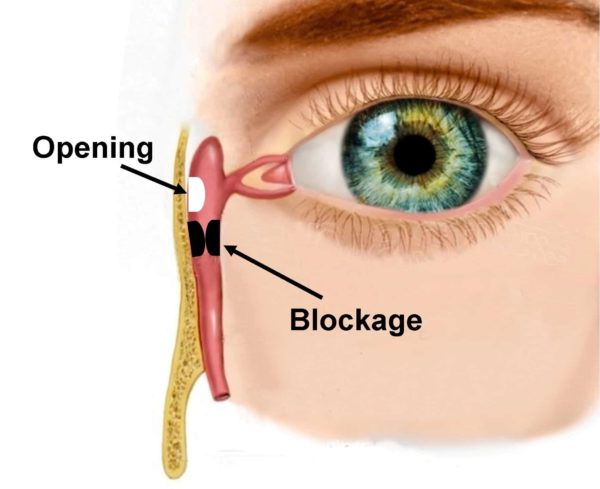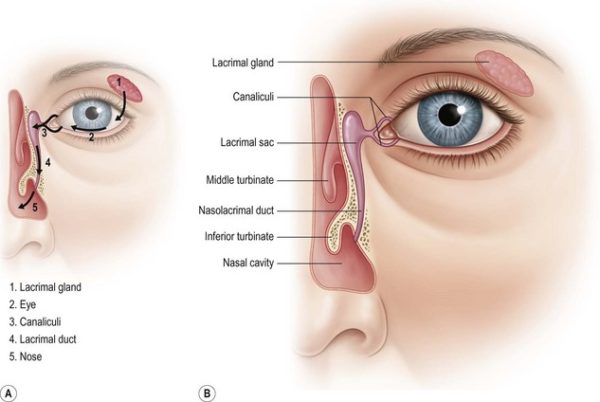Project Description
DCR
Dacryocystorhinostomy surgery is a procedure that aims to eliminate fluid and mucus retention within the lacrimal sac, and to increase tear drainage for relief of epiphora (water running down the face). A DCR procedure involves removal of bone adjacent to the nasolacrimal sac and incorporating the lacrimal sac with the lateral nasal mucosa in order to bypass the nasolacrimal duct obstruction. This allows tears to drain directly into the nasal cavity from the canaliculi via a new low-resistance pathway.

DCR Surgery
Anesthesia: DCR may be performed under monitored sedation or general anesthesia based on the surgeon and patient’s preference. The patient may typically be discharged home on the same day. Local anesthesia, using an equal mixture of 1-2% lidocaine and 0.5% bupivicaine, with 1:100,000 epinephrine, is infiltrated into the medial canthus, lower lid incision site, and nasal mucosa. Nasal packing soaked in 4% cocaine, lidocaine, or afrin (oxymetazoline) provides additional nasal anesthesia and mucosal vasoconstriction to the middle meatus. Meticulous hemostasis is crucial to a successful DCR surgery.
Technique (External DCR): A curvilinear skin incision is made with a surgical marking pen at the level of the medial canthal tendon and extending into the thin skin of the lower lid for approximately 10-12 mm. The patient’s face is prepped and draped in the usual sterile fashion. A lubricated corneal protective lens is often placed on the ocular surface to protect the globe during surgery. The skin is incised with a 15-blade scalpel or monopolar unit with a Colorado needle tip. The orbicularis oculi muscle fibers are separated until the periosteum of the anterior lacrimal crest is identified. The dissection should be lateral to the angular vessels to avoid bleeding. The periosteum along the anterior lacrimal crest is next incised from the level of the medial canthal tendon extending inferiorly, and the periosteum widely elevated with Freer elevators anteriorly off the nasal bone. The periorbita and lacrimal sac are similarly elevated posterolaterally off the lacrimal sac fossa. The fossa is next carefully perforated where the bone thins at the suture line between the thicker frontal process of the maxilla and the adjacent thinner lacrimal bone. Kerrison rongeurs or a high-speed drill are used to remove the bone of the lacrimal fossa, inferiorly to the lacrimal duct at the inferior orbital rim, and anteriorly past the anterior lacrimal crest. A bony ostium measuring approximately 15mm is removed, taking care to avoid a cerebrospinal fluid leak or injuring the underlying nasal mucosa.
A 0-0 Bowman probe is passed into the lacrimal sac to tent the sac medially, and Westcott scissors are used to open the lacrimal sac from the duct to the fundus, with relaxing incisions at both ends. Any abnormal scar overlying the opening of the common canaliculus, lacrimal sac stones, foreign bodies, or masses are removed if present. A corresponding incision is made in the nasal mucosa, to create anterior only, or anterior and posterior flaps.

Postoperative DCR care
The patient may have a severe bleeding from the nose within the first 24 hours.To prevent this, we need to keep the height of the patient head up to 30 degrees and place the ice compress pack at the position. If bleeding is not controlled, using anterior or posterior nasal tamponade may become necessary in the hospital.The nurse should note that bleeding should note that the nasal bleeding may not be and the bleeding might go to the stomach through the throat.
The patient should be trained not to blow his/her nose; especially if there is a Budlkin tube at the site of the surgery, this action will move the tube. Oral antibiotics are usually administrated at the doctor’s order immediately after surgery to prevent infection at the site of surgery. Antibiotic drops are usually needed from the day after surgery for 2-3 weeks.Sometimes steroid dropis also prescribed.The nasolacrimal duct obstruction (NLDO) can be treated with probing at the age of 6 to 12. In the probing fails, silicon tubes will be used (remain for 2-4 months within the tear system).
The nasolacrimal duct is not performed until the age of 6 months.During this period, the parents should be trained to drop the Sulfacetamide 1% drop 4 times a day in the baby’s eyes (accompanied by massage of the lacrimal duct).
